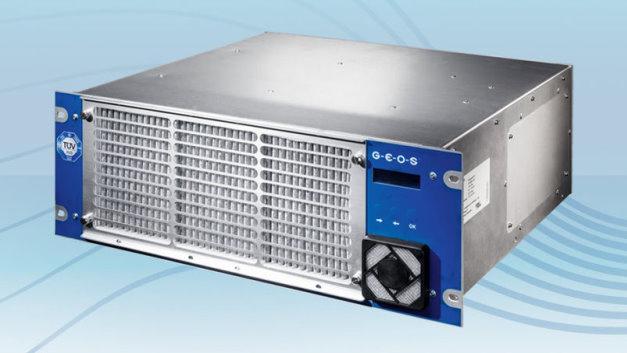
EPH-Elektronik presents the first mobile, TÜV-SÜD-certified fuel cell, which provides clean electricity from off-grid areas and applications for several days, eg construction site and traffic engineering, mountain huts, caravaning or boating.
The world's first TÜV SÜD-certified GEOS Donator C380 fuel cell with 380 watts of power output is suitable for various off-grid applications. It uses proton exchange membrane technology to convert chemical energy into electrical energy and requires only new hydrogen bottles as “replenishment”.
Motorway maintenance companies, for example, place trailers with directions in construction sites where increasingly freely programmable LED-illuminated systems with an electrical energy requirement are being used. With pure battery operation the trailer must be exchanged after approximately 30 hours. With a donor and a 50-liter hydrogen bottle, the electricity lasts for twelve days. And even then the trailer does not have to be replaced, but only the commercial hydrogen bottle.
The system, which is equipped with optimized battery charging technology, enables a wide variety of load profiles and can be integrated into existing energy systems. Due to high power output it has short charging times, it provides 31.5 A charging current at 12 V and has 9000 Wh charging capacity per day.
The low-maintenance and quiet-running system uses hydrogen as a carbon-free energy source and therefore does not emit CO 2 . Unlike methanol-fueled fuel cells, the hydrogen-based EPH system is environmentally safe and not water endangering.
A charging cycle of the fuel cell system is performed according to this procedure
a) Preliminary phase, factory-set system start at <12.2 V DC battery voltage, where the starting voltage depends on the battery type / application,
b) charging phase, charging with approximately constant power until reaching the final charging voltage, which in turn depends on the battery type,
c) recharging phase, depending on the battery capacity and load applied until reaching the device's internal shutdown criterion,
d) cooling phase,
e) Standby.
Source:Hagen Lang-Smartworld.de
Read the most up to date Fuel Cell and Hydrogen Industry news at FuelCellsWorks




